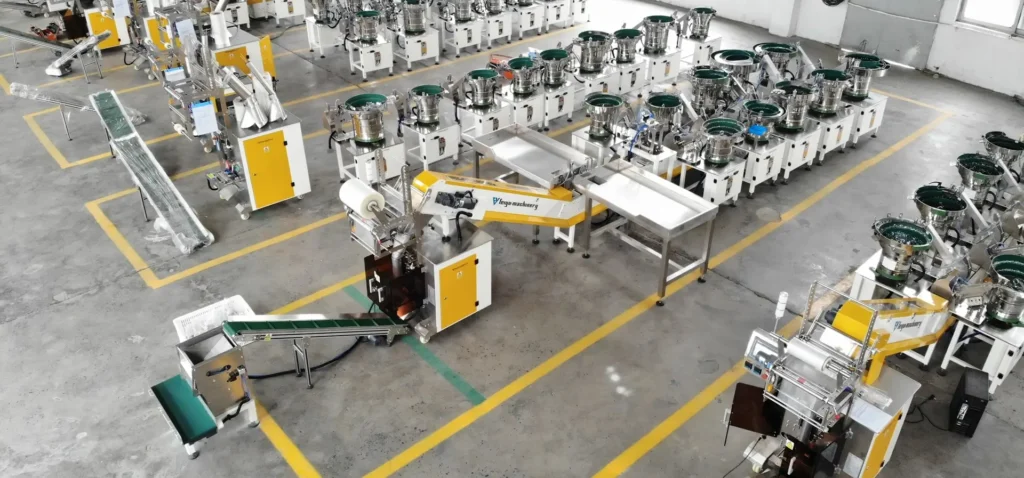Fasteners such as screws, nuts, and bolts are essential components in manufacturing and construction. Efficient packaging of these items is critical for inventory management, shipping, and customer satisfaction. Fastener packaging machines are specialized equipment designed to automate this process, offering speed, precision, and consistency.

1. What Are Fastener Packaging Machines?
1.1 Types of Fastener Packaging Machines
Fastener packaging machines vary based on their functionality:
- Counting and Bagging Machines: Automatically count individual items and package them into bags or pouches. Ideal for small to medium-sized packaging needs.
- Cartoning Machines: Place fasteners into boxes with accuracy and consistency, suitable for retail packaging or bulk shipments.
- Mixed Product Packaging Machines: Combine different types of fasteners into a single package, useful for kits or sets.
- Semi-Automatic Machines: Require some manual input but reduce labor requirements compared to fully manual packaging.
1.2 Common Features
Key features to look for include:
- Counting accuracy: Ensures the correct number of items per package.
- Packaging speed: Important for high-volume production.
- Flexibilité: Ability to handle different fastener sizes and types.
- Integration capabilities: Some machines can work with conveyors, labeling systems, or checkweighers.
2. Applications in the Fastener Industry
2.1 Packaging Screws, Nuts, and Bolts
Fasteners come in various sizes, shapes, and materials. Packaging machines help:
- Maintain accuracy in counts
- Protect fasteners from damage
- Ensure uniform packaging for storage or shipment
2.2 Handling Plastic and Rubber Parts
Some packaging machines can handle delicate or mixed components, combining plastic, rubber, and metal parts without causing damage.
2.3 Small vs. Large Batch Production
- Small batches: Semi-automatic machines may be sufficient.
- Large batches: Fully automated machines increase speed and reduce labor costs.
3. Key Considerations When Choosing a Machine
3.1 Accuracy and Speed
High-precision counting sensors and high-speed operations are essential to reduce errors and increase throughput.
3.2 Multi-functional and compatible
Machines should handle different sizes and types of fasteners. Multi-functional designs allow one machine to serve multiple purposes, improving cost-effectiveness.
3.3 Automation Level
The level of automation needed depends on production volume, labor availability, and budget. Fully automated machines are ideal for large-scale production, while semi-automatic options suit smaller operations.
4. Innovations and Technology
4.1 Precision Counting Systems
Modern sensors, including optical and electronic systems, ensure consistent package counts.
4.2 Multi-functional Packaging
Machines capable of bagging, boxing, and combining different fasteners reduce the need for multiple machines.
4.3 Integration with Other Production Equipment
Advanced systems can integrate with conveyors, labeling machines, and quality control equipment, streamlining the production line.
5. Practical Tips for Decision-Making
5.1 Assess Production Needs
Consider the types of fasteners, batch sizes, and packaging formats your operation requires.
5.2 Compare Machine Specifications
Consider speed, accuracy, how well it handles different materials, and maintenance requirements when choosing a machine.
5.3 Review Maintenance and Support Options
Ensure that the machine is reliable and that technical support, parts, and service are accessible.
6. Conclusion
Choosing the right fastener packaging machine is critical for improving efficiency, accuracy, and reliability in fastener production and distribution. Manufacturers study the types of machines, their key features, and industry uses to select the right equipment. With this knowledge, they can choose the right equipment for their production. This ensures their machines meet their production needs.